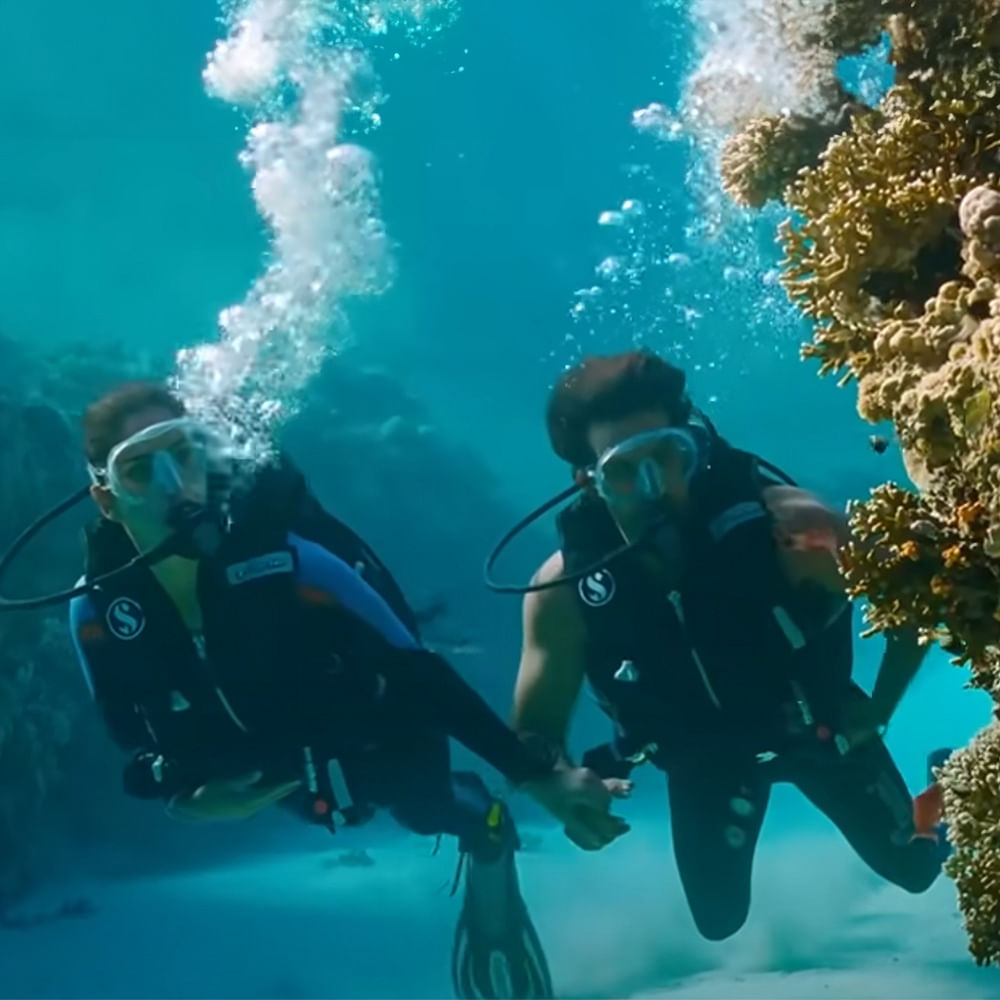Other than the seafood and beaches, Andaman Islands are one of the most popular destinations in India for scuba diving. The islands are renowned for their diverse coral reefs, which attract a variety of fish, mollusks and crustaceans. By diving deep in the ocean, about 300 species of fish can be seen up close. With just a few hours of basic training, you can venture out into a world free of stress, deadlines and most importantly, humans. There are more than 20 dive spots located around the islands for divers, from beginners to advanced. Beside the regular open water diving, there are other forms of scuba diving, such as night diving, deep diving and helmet diving. We recommend scuba diving between January to May and September to November, which is when the currents are calmest and clear enough to spot fish and other marine life. If you are an adrenaline junky or just want to have a close to weightless, serene experience, you must try scuba diving in the Andamans. Here is a list of scuba diving spots in the Andamans that'll definitely help you have your ZNMD moment.
The Ultimate Guide To Scuba Diving In The Andamans: Corals, Caves, Whales & More
Mahatma Gandhi Marine National Park, Wandoor
Apart from snorkeling, boat rides, bird-watching and myriad other activities, Mahatma Gandhi Marine National Park also offers scuba diving. It is home to an exquisite coral reef, which is one of the reasons it is a popular diving spot. Another reason is that it is a safe space due to the absence of predatory fish. Additionally, if you are on a budget, diving here will be more economical. This location is perfect for both novices and experts.
Havelock Island
Havelock Island is a popular location for scuba diving. While it has around 25 sites, if you're a beginner, we highly recommend Nemo Reef. Nemo Reef is the perfect dive spot for beginners. Take your first plunge underwater, in water so calm it feels like you're swimming in a pool.
Neil Island
Neil Island, also known as Shaheed Dweep, is a 'little island paradise'. It has has great dive sites for relaxed drift dives. A little less crowded than Havelock Island, Neil has a beautiful array of reef fish and macro life. If you're lucky, you might even spot dugongs. Neil Island has five diving spots, out of which Margharita's Mischief stands out, since it makes for an ideal dive site because of its easy depth and clear water. This dive spot is a site to behold with a sandy bottom covered by a maze of boulders.
Cinque Islands
With shimmering crystal water and surrounded by lush green jungles, Clique Island is one of the loveliest islands in the Andamans. This hidden paradise is yet to come into the limelight, giving you enough time to explore and enjoy it without much disturbance. Its clear emerald water allows visibility of up to 80ft. This Island offers a kaleidoscope of marine life, including exotic fish, sea anemones, turtles, starfish and many more marine marvels.
The Wall
Located very close to Havelock Island, The Wall was one of the first dive sites to be discovered, back in 2004. It can be admired like an art gallery, having a variety of corals, hydroid trees, oysters and small caves. The Wall is great for people who like to admire big, schooling fish. It is very unlike the other diving spots around Havelock, due to it's topography. December to March marks mating season for the octopus in this vicinity and is not a time we would advice you to visit. Barring that, it should definitely be on your list for a unique diving experience.
Dixon's Pinnacles
Named after a local diver who discovered it, Dixon's Pinnacle is three giant rock pinnacles at the bed of the ocean that are covered with the most exquisite corals. It is a popular cleaning station for large fish like manta rays, mobula rays, turtles and occasionally whale sharks. The sheer beauty of the site makes it an excellent photography point placing Dixon's Pinnacle on the top of our dive holiday list.
Elephant Beach
The Beach owes its name to—you guessed it—Havelock's elephants taking a walk in the area. It is a popular dive site for beginners. The site is a sandy area dotted with rocks and hard coral patches. Divers have also come across sea-horses. More commonly found in the area are small macro life like shrimp, pipe fish and porcelain crabs. Elephant Beach is the best site for macro photography.

